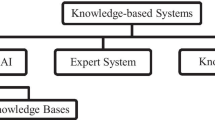Abstract
Fourier-transform infrared (FTIR) spectroscopy has been a major point of development in many wine laboratories in recent years. It enables almost instant analysis of several properties of wine, usually with very good precision and accurate results. Nevertheless, validation procedures should not be forgotten and should be fully performed. Recovery experiments were performed by spiking wine samples with different amounts of organic acids (tartaric, malic, lactic, acetic and citric—the most prominent in wines). After FTIR analysis of the total acidity and of each organic acid concentration, recoveries were calculated. For total acidity recovery results were, in general, good and very close to 100% (64–111%). On the other hand, for individual organic acid concentrations, the recovery results were lower than 100% (11–73%) for all spiking additions. These results could be explained by spectroscopic interferences between the organic acids. Because they have similar infrared spectra, it is not easy to distinguish between them and, therefore, to achieve accurate calibration. When total acidity, with a different infrared spectrum from the other abundant compounds in the wine, was taken as a single property the recovery results were acceptable.
Similar content being viewed by others
References
Silverstein RM, Bassler GC, Morrill TC (1991) Spectrometric identification of organic compounds, 5th edn. Wiley, New York
Moreira JL, Marcos AM, Barros P (2002) Ciência Téc Vitiv 17(1):27–33
Dubernet M, Dubernet M (2000) Revue Française d’Oenologie 181:10–13
Patz C-D, Blieke A, Ristow R, Dietrich H (2004) Anal Chim Acta 513:81–89
Moreira JL, Marcos AM, Parros B (2002) Ciência Téc Vitiv 17 (2):41
Moreira JL, Santos L (2004) Anal Chim Acta 513:263–268
Vanden Branden K, Hubert M (2004) Anal Chim Acta 515:229–241
Patz C-D, David A, Thente K, Kürbel P, Dietrich H (1999) Vinic Enol Sci 54:80
Ribéreau-Gayon J, Peynaud E, Sudraud P, Ribéreau-Gayon P (1982) Sciences et Techniques du Vin I—Analyse et Contrôle des Vins, Duno, Paris
European Community Regulation No. 2676/90 of 17/9/1990, Off J Eur Comm No. L272 of 3/10/1990
Curvelo Garcia AS (1988) Controlo de Qualidade dos Vinhos—Química Enológica, Métodos Analíticos, Instituto da Vinha e do Vinho
Acknowledgements
The authors wish to acknowledge ALABE—Associação de Laboratórios de Enologia for its financial support and IVV—Instituto da Vinha e do Vinho for providing the FTIR equipment.
Author information
Authors and Affiliations
Corresponding author
Rights and permissions
About this article
Cite this article
Moreira, J.L., Santos, L. Analysis of organic acids in wines by Fourier-transform infrared spectroscopy. Anal Bioanal Chem 382, 421–425 (2005). https://doi.org/10.1007/s00216-005-3062-2
Received:
Revised:
Accepted:
Published:
Issue Date:
DOI: https://doi.org/10.1007/s00216-005-3062-2



